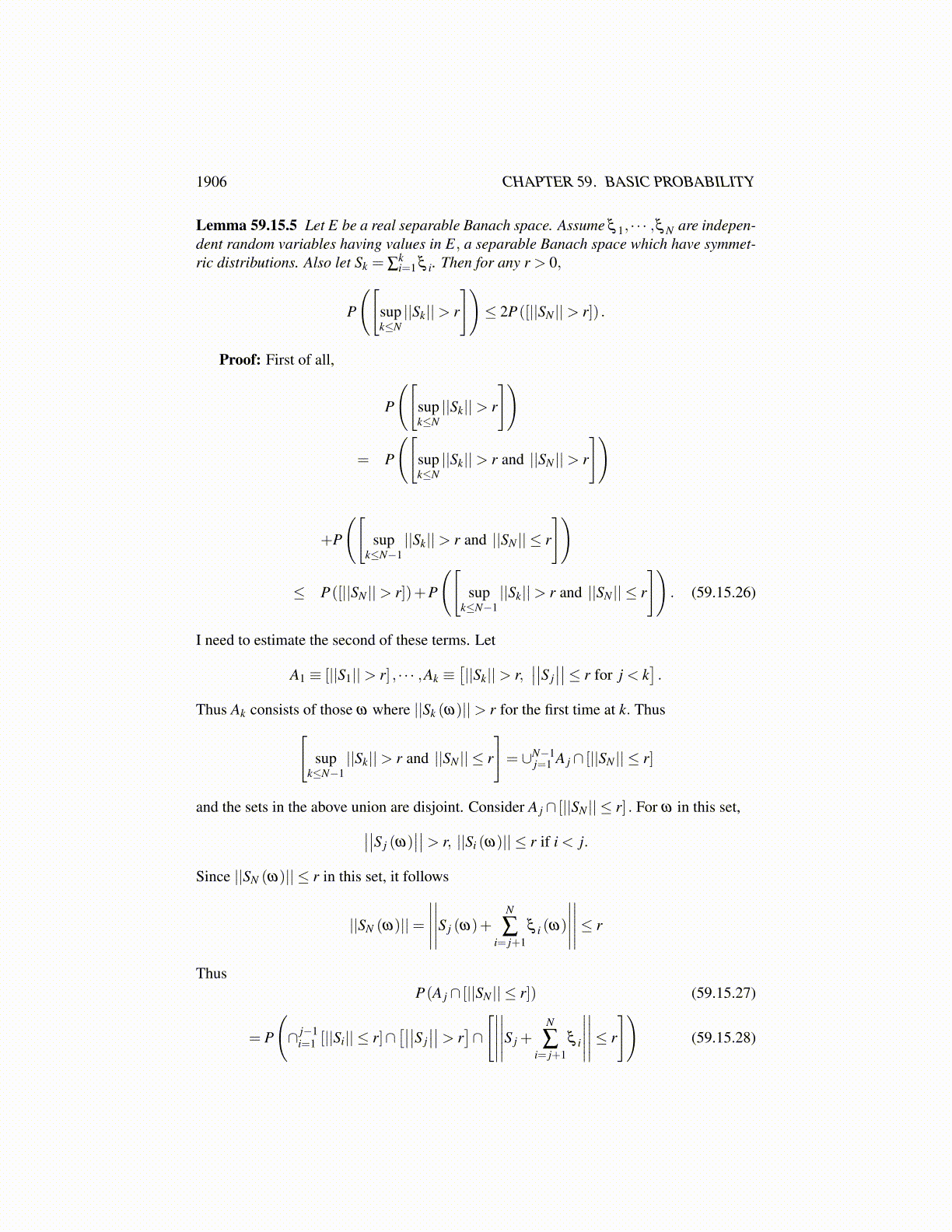
1906 CHAPTER 59. BASIC PROBABILITY
Definition 59.15.1 Let X be a random variable. L (X) = µ means λ X = µ. This is calledthe law of X. It is the same as saying the distribution measure of X is µ.
Lemma 59.15.2 Let (Ω,F ,P) be a probability space and let X : Ω→ E be a randomvariable, where E is a real separable Banach space. Also let L (X) = µ, a probabilitymeasure defined on B (E) , the Borel sets of E. Suppose h : E → R is in L1 (E; µ) or isnonnegative and Borel measurable. Then∫
Ω
(h◦X)dP =∫
Eh(x)dµ.
Proof: First suppose A is a Borel set in E. Then∫E
XA (x)dµ ≡ µ (A)≡ P([X ∈ A])∫Ω
(XA ◦X)dP =∫
Ω
XX−1(A) (ω)dP≡ P(X−1 (A)
)≡ P([X ∈ A])
Thus for nonnegative simple Borel measurable functions s, it follows∫Ω
(s◦X)dP =∫
Es(x)dµ
Now approximating with an increasing sequence of nonnegative simple functions and us-ing the monotone convergence theorem, the desired formula holds for nonnegative Borelmeasurable functions h.
If h is Borel measurable and in L1 (E; µ) , then you can consider the formula for thepositive and negative parts and get the result in this case also. This proves the lemma.
Here is a simple definition and lemma about random variables whose distribution issymmetric.
Definition 59.15.3 Let X be a random variable defined on a probability space, (Ω,F ,P)having values in a Banach space, E. Then it has a symmetric distribution if whenever A isa Borel set,
P([X ∈ A]) = P([X ∈ −A])
In terms of the distribution,λ X = λ−X .
It is good to observe that if X ,Y are independent random variables defined on a prob-ability space, (Ω,F ,P) such that each has symmetric distribution, then X +Y also hassymmetric distribution. Here is why. Let A be a Borel set in E. Then by Theorem 59.14.7on Page 1904,
λ X+Y (A) =∫
Eλ X (A− z)dλY (z)
=∫
Eλ−X (A− z)dλ−Y (z)
= λ−(X+Y ) (A) = λ X+Y (−A)